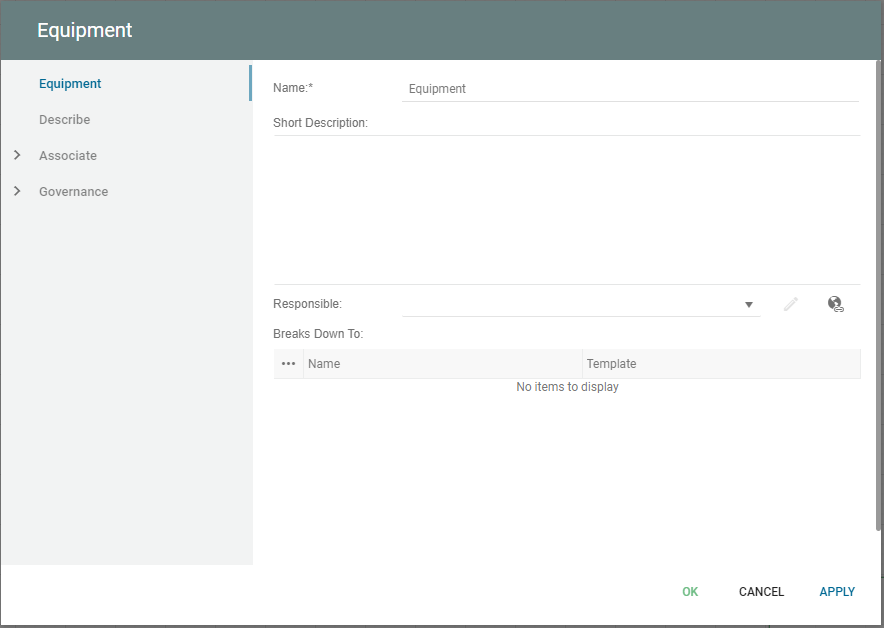A Fixed Installation is used to describe non-moveable assets in e.g. a production site.
As a Work Center it is possible to to describe the Installation from a economic point of view.
A Fixed Installation is used to describe non-moveable assets in e.g. a production site.
As a Work Center it is possible to to describe the Installation from a economic point of view.
A gateway is a symbol that represents a decision point in the process where the flow of the process can take multiple paths. There are different types of gateways that can be used, including exclusive, inclusive, complex, and parallel gateways.
An exclusive gateway is used to represent a decision point in the process where the flow of the process can only take one path based on a single condition or criteria. For example, in an order fulfillment process, an exclusive gateway might be used to determine whether an item is in stock or not. If the item is in stock, the flow of the process can proceed to the next step, while if it is out of stock, the flow of the process might be directed to a backorder or cancellation process.
An inclusive gateway is used to represent a decision point in the process where the flow of the process can take multiple paths based on different conditions or criteria. For example, in a loan application process, an inclusive gateway might be used to evaluate the credit score, income, and employment history of an applicant to determine which products or terms they are eligible for.
A complex gateway is used to represent a decision point in the process where the flow of the process can take multiple paths based on complex or multiple criteria. For example, in a hiring process, a complex gateway might be used to evaluate the qualifications and experience of a candidate, as well as their availability and salary expectations, to determine which role they are best suited for within the organization.
A parallel gateway is used to represent a decision point in the process where the flow of the process can be split into multiple parallel paths. For example, in a manufacturing process, a parallel gateway might be used to split the flow of materials into multiple parallel paths, allowing multiple components of a product to be manufactured in parallel.
In summary, gateways are symbols used in business process diagrams to represent decision points where the flow of the process can take multiple paths. By using different types of gateways, organizations can represent different types of decision-making processes and better understand how the process can be optimized to achieve the desired outcomes.
A physical structure or environment. A facility represents a physical resource that has the capability of facilitating (e.g., housing or locating) the use of equipment. It is typically used to model factories, buildings, or outdoor constructions that have an important role in production or distribution processes. Examples of facilities include a factory, laboratory, warehouse, shopping mall, cave, or spaceship. Facilities may be composite; i.e., consist of sub-facilities. The name of a facility should preferably be a noun referring to the type of facility; e.g., “Rotterdam oil refinery”.

External entity refers to an organization or individual that is outside of the boundaries of a specific business and with whom the business interacts. External entities can include customers, suppliers, government agencies, regulatory bodies, and other businesses.
Executes actions on multiple items (e.g., iterating over a collection). Supports parallel or iterative execution.
Input or output node for an ExpansionRegion, handling the flow of multiple items.
One or more physical machines, tools, or instruments that can create, use, store, move, or transform materials.
Equipment comprises all active processing elements that carry out physical processes in which materials (which are a special kind of technology object) are used or transformed. Equipment is a specialization of the node element from the Technology Layer. Therefore, it is possible to model nodes that are formed by a combination of IT infrastructure (devices, system software) and physical infrastructure (equipment); e.g., an MRI scanner at a hospital, a production plant with its control systems, etc. The name of a piece of equipment should preferably be a noun.

The Equipment object can be used to describe an equipment asset. The object can be used in e.g. a ProductionSite or ProductRoadmap.

An external or internal condition that motivates an organization to define its goals and implement the changes necessary to achieve them. Drivers that are associated with a stakeholder are often called “concerns”. Examples of internal drivers include customer satisfaction and profitability. Drivers of change may also be external to the enterprise and need not have a stakeholder associated with them; e.g., economic changes or changing legislation. The name of a driver should preferably be a noun.

A physical IT resource upon which system software and artifacts may be stored or deployed for execution. A device represents a physical IT resource with processing capability. It is typically used to model hardware systems such as mainframes, PCs, smartphones, or routers. It can also be used to model virtualized hardware. Usually, devices are part of a node together with system software. Devices may be composite; i.e., consist of sub-devices. The name of a device should preferably be a noun phrase referring to the type of
hardware; e.g., “IBM System z mainframe”.
